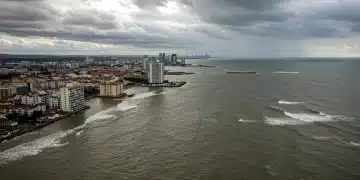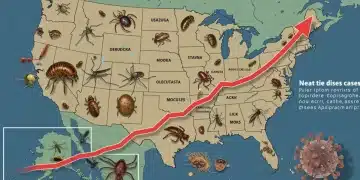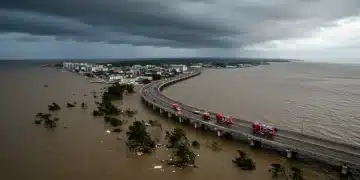Water Scarcity 2025: Western US Freshwater Solutions
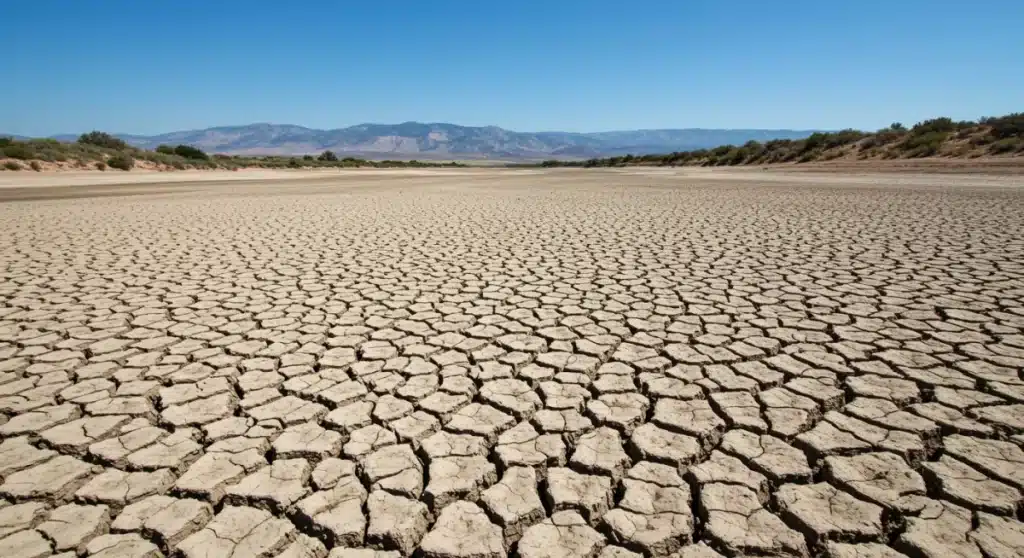
The Western US is grappling with a projected 30% decrease in freshwater availability by 2025, necessitating urgent and comprehensive solutions to avert a major crisis and ensure regional stability.
Western US Water Scarcity is no longer a distant threat but a rapidly unfolding reality, with projections indicating a staggering 30% reduction in freshwater availability by 2025. This critical forecast demands immediate attention, innovative strategies, and decisive action from policymakers, communities, and individuals across the region.
The Looming Crisis: Understanding Western US Water Scarcity by 2025
The Western United States stands at the precipice of an unprecedented freshwater crisis. Scientific models and recent drought trends confirm a projected 30% decrease in freshwater availability by 2025, a situation that poses severe challenges to agriculture, urban centers, and natural ecosystems. This isn’t merely a cyclical drought; it represents a systemic shift in water resources driven by climate change, increased demand, and historical water management practices.
Leading climate research institutions, including the Scripps Institution of Oceanography, have consistently highlighted the impact of rising temperatures on snowpack, which historically acts as the primary reservoir for much of the Western US. Less snow means less runoff, directly translating to reduced water in rivers and reservoirs. Compounded by persistent aridification, this creates a formidable challenge for states reliant on the Colorado River Basin and other critical water sources.
Key Drivers of the 30% Reduction
- Climate Change: Elevated temperatures accelerate snowmelt, increase evaporation rates from reservoirs and soil, and intensify drought conditions.
- Population Growth: Rapid urbanization in states like Arizona, California, and Nevada continues to place immense pressure on finite water supplies.
- Agricultural Demands: The Western US is a major agricultural producer, with irrigation accounting for a significant portion of water usage.
- Outdated Infrastructure: Aging water infrastructure leads to significant water loss through leaks and inefficiencies in delivery systems.
The implications of this reduction extend beyond mere inconvenience, threatening economic stability, public health, and ecological balance. Understanding these drivers is the first step toward formulating effective and sustainable solutions for the region’s water future.
Innovative Technologies: Pushing the Boundaries of Water Management
As the reality of Western US Water Scarcity intensifies, technological innovation emerges as a critical lifeline. Scientists and engineers are developing and deploying advanced solutions to augment water supplies, improve efficiency, and reclaim previously unusable water sources. These technologies are no longer theoretical; many are already being implemented or are on the cusp of widespread adoption, offering tangible hope for mitigating the impending crisis.
Desalination, once considered too energy-intensive and costly for broad application, is becoming increasingly viable. New reverse osmosis membranes and energy recovery systems are significantly reducing the operational footprint, making it a more attractive option for coastal communities. For instance, California’s Carlsbad Desalination Plant now provides a significant portion of San Diego County’s water, demonstrating large-scale operational success.
Breakthroughs in Water Reclamation and Reuse
- Orange County Water District (OCWD), California: Their Groundwater Replenishment System (GWRS) is the world’s largest water purification system for indirect potable reuse, transforming wastewater into high-quality drinking water.
- Advanced Filtration Systems: Ultrafiltration and nanofiltration technologies are becoming more efficient, removing micro-pollutants and pathogens with greater precision.
- Smart Monitoring and AI: Artificial intelligence and IoT sensors are revolutionizing water networks, enabling real-time leak detection, predictive maintenance, and optimized distribution, drastically reducing water loss.
These technological advancements represent a paradigm shift in how the Western US can approach its water challenges. Investing in and scaling these innovations will be fundamental to securing a sustainable water future in the face of diminishing natural supplies.
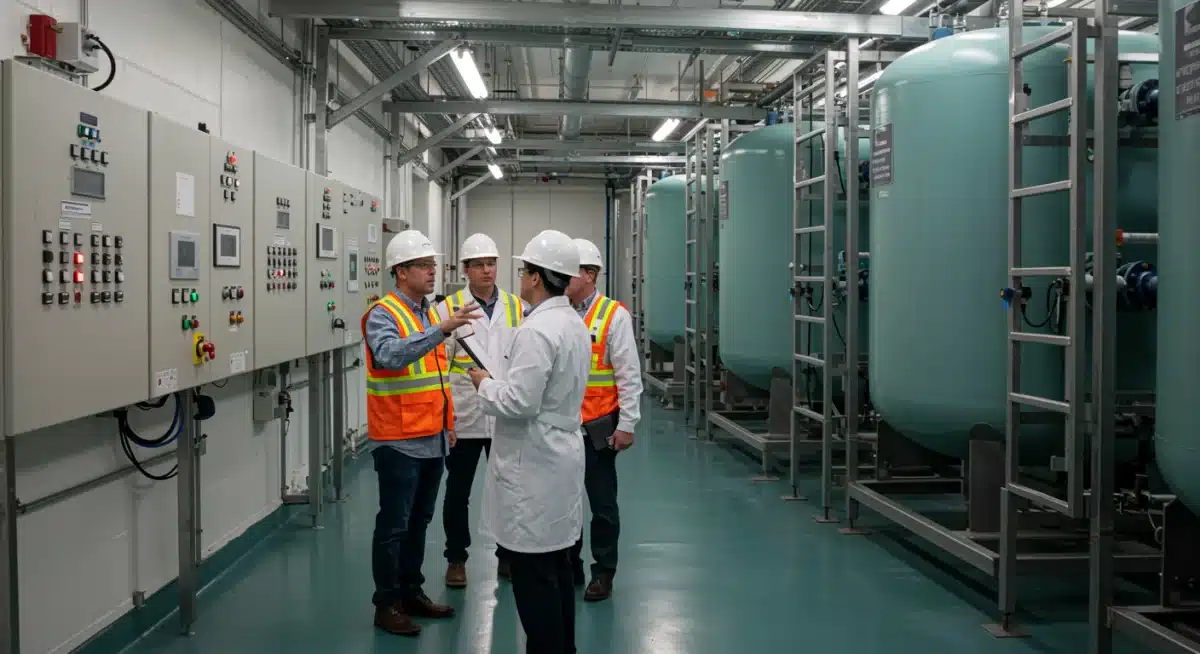
Policy and Governance: Crafting a Cohesive Water Strategy
Addressing Western US Water Scarcity requires more than just technological fixes; it demands robust policy frameworks and effective governance. Fragmented water rights, interstate disputes, and outdated regulations have historically hampered comprehensive solutions. However, a growing sense of urgency is driving states and federal agencies toward more collaborative and forward-thinking water management strategies.
The Colorado River Compact, a foundational agreement governing water allocation, is currently under immense pressure due to reduced flows. Renegotiations are crucial, with states like Arizona, California, and Nevada working to establish new, more equitable, and sustainable allocation models. These discussions are complex, but the imperative to avoid future conflicts is pushing stakeholders towards shared solutions.
Federal involvement, particularly through agencies like the Bureau of Reclamation, is critical in funding infrastructure projects, supporting research, and facilitating interstate cooperation. The Infrastructure Investment and Jobs Act, passed in 2021, allocated significant funds to water infrastructure, including projects for drought resilience, water recycling, and dam safety, marking a substantial federal commitment.
Key Policy Initiatives and Recommendations
- Interstate Compact Revisions: Modernizing existing water compacts to reflect current hydrological realities and climate projections.
- Incentives for Conservation: Implementing state and federal programs that incentivize water-efficient agricultural practices and urban conservation.
- Water Market Development: Exploring regulated water markets to allow for flexible and efficient water reallocation, ensuring that water goes to its highest-value use during scarcity.
Effective policy and governance are the bedrock upon which all other solutions must rest. Without a unified and adaptable legal and administrative framework, even the most innovative technologies and dedicated conservation efforts will struggle to achieve their full potential in combating water scarcity.
Community Engagement and Conservation: Local Actions, Regional Impact
While large-scale infrastructure and policy changes are essential, the fight against Western US Water Scarcity also hinges on the collective actions of communities and individuals. Grassroots conservation efforts, public awareness campaigns, and local initiatives play a vital role in reducing demand and fostering a culture of water stewardship. Every drop saved at the local level contributes to the broader regional effort.
Many cities and towns in the Western US have already implemented stringent water conservation ordinances, mandating efficient landscaping, restricting outdoor watering, and offering rebates for water-saving appliances. Public education campaigns, leveraging local media and community events, are crucial in explaining the severity of the crisis and empowering residents with practical steps they can take.
Homeowners and businesses are increasingly adopting xeriscaping – landscaping with drought-tolerant plants – and installing smart irrigation systems that optimize water use based on weather conditions and soil moisture. These changes, while seemingly small individually, accumulate to significant water savings across entire metropolitan areas.
Successful Community-Led Initiatives
- Turf Replacement Programs: Cities offering financial incentives for replacing water-intensive lawns with drought-resistant alternatives.
- Water Audit Programs: Providing free or subsidized water audits for residences and businesses to identify and fix leaks and inefficiencies.
- School Education Programs: Integrating water conservation education into school curricula to instill lifelong water-saving habits in younger generations.
Empowering communities to take ownership of their water future is paramount. By fostering a collective responsibility and providing accessible tools and information, local actions can create a powerful ripple effect that strengthens regional resilience against freshwater scarcity.
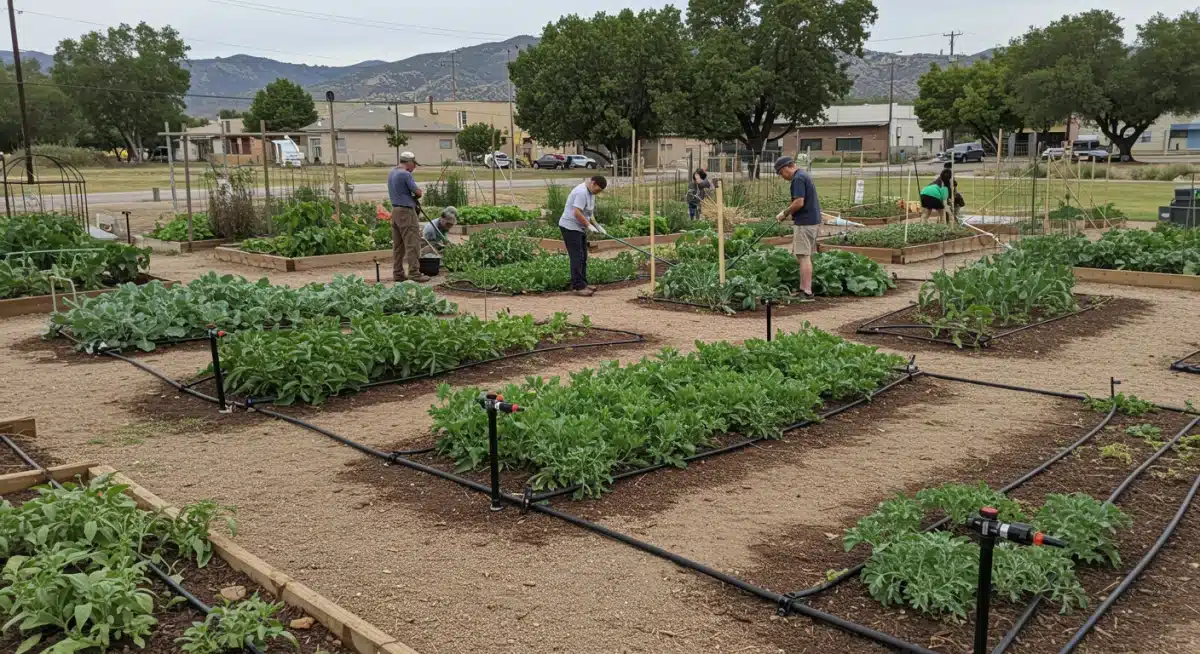
Agricultural Adaptations: Farming in a Water-Scarce Future
Agriculture accounts for the largest share of water use in the Western US, making it a critical sector for adaptation in the face of dwindling freshwater supplies. Addressing Western US Water Scarcity effectively requires significant shifts in farming practices, embracing technologies and methods that maximize water efficiency while sustaining agricultural output. Innovation in this sector is not just about saving water; it’s about ensuring food security and economic viability.
Precision agriculture techniques are gaining traction, allowing farmers to apply water and nutrients only where and when needed. This includes technologies like drip irrigation, which delivers water directly to plant roots, significantly reducing evaporation and runoff compared to traditional flood irrigation. Satellite imagery and drone technology provide real-time data on crop health and water stress, enabling highly targeted irrigation schedules.
Beyond technology, shifts in crop selection are also becoming necessary. Farmers are increasingly exploring drought-resistant crop varieties and adopting different planting schedules to align with changing rainfall patterns. Research into genetically modified crops designed for lower water consumption also holds promise for future agricultural resilience.
Strategies for Sustainable Agriculture
- Drip and Micro-irrigation: Implementing targeted irrigation systems to minimize water waste.
- Soil Moisture Sensors: Using technology to determine precise irrigation needs, preventing overwatering.
- Crop Switching: Transitioning from high-water-use crops (e.g., alfalfa, cotton) to more drought-tolerant alternatives (e.g., certain grains, specialty crops).
- Water Banking and Transfers: Developing systems where farmers can store or trade water rights, providing flexibility during dry periods.
The agricultural sector’s proactive adaptation to water scarcity is not just a matter of survival for individual farms but a vital component of regional water security. Supporting farmers through subsidies, research, and technical assistance will be crucial in facilitating this necessary transition.
Looking Ahead: Preparing for a Resilient Water Future
The projected 30% decrease in freshwater availability in the Western US by 2025 presents an undeniable challenge, but it also catalyzes unprecedented innovation and collaboration. The solutions are multifaceted, requiring a blend of advanced technology, progressive policy, community engagement, and agricultural adaptation. The path forward demands a sustained commitment to resourcefulness and foresight.
One key element of future resilience is integrated water resource management, which views all water sources – from precipitation to wastewater – as part of a single, interconnected system. This holistic approach encourages coordinated planning across different sectors and jurisdictions, moving away from siloed management. Investments in stormwater capture, for instance, can replenish groundwater aquifers and reduce reliance on imported water, creating a more diversified and robust water portfolio.
Furthermore, climate modeling continues to improve, offering more granular predictions that can inform long-term planning and infrastructure development. Incorporating these advanced models into decision-making processes will allow for more adaptive and responsive water management strategies, anticipating future droughts and extreme weather events.
Pillars of Future Water Resilience
- Investment in Infrastructure: Modernizing and expanding water treatment, distribution, and storage facilities.
- Cross-Sector Collaboration: Fostering partnerships between government, industry, agriculture, and environmental groups.
- Public Awareness and Education: Maintaining high levels of public understanding and participation in conservation efforts.
- Research and Development: Continuously exploring new technologies and methodologies for water sustainability.
While the challenges are significant, the collective will and innovative spirit in the Western US offer a strong foundation for building a water-resilient future. The next few years will be critical in determining the long-term success of these efforts.
Key Focus Area |
Primary Solution Strategy |
|---|---|
Technological Innovation |
Advanced desalination, water recycling (DPR/IPR), smart grid monitoring. |
Policy & Governance |
Colorado River Compact renegotiations, federal funding for infrastructure, conservation incentives. |
Community & Conservation |
Local ordinances, xeriscaping, public education, turf replacement programs. |
Agricultural Adaptation |
Precision irrigation, drought-resistant crops, water banking, efficient farming practices. |
Frequently Asked Questions About Western US Water Scarcity
▼
The primary cause is climate change, leading to reduced snowpack, increased
evaporation, and intensified drought conditions across the Western US.
Compounding factors include population growth and agricultural demands.
▼
Technology offers advanced desalination, direct and indirect potable reuse
(water recycling), and smart monitoring systems. These innovations aim to
create new water sources and drastically improve water use efficiency.
▼
Effective policy and governance are crucial for renegotiating water
compacts, implementing conservation incentives, and funding critical
infrastructure. They provide the framework for coordinated regional
solutions and sustainable management.
▼
Communities can implement local conservation ordinances, promote
xeriscaping, and offer water audit programs. Residents can adopt water-saving
habits, install efficient appliances, and participate in public education
campaigns.
▼
Agriculture is adapting through precision irrigation (drip systems),
drought-resistant crop varieties, soil moisture sensors, and exploring water
banking. These methods aim to maximize water efficiency and maintain crop
yields with less water.
What this means
The imperative to address Western US Water Scarcity by 2025 is clear and immediate. This situation underscores the interconnectedness of climate, policy, technology, and community action. The ongoing efforts signal a critical shift towards valuing and managing water as the finite, precious resource it is. Moving forward, sustained investment, cross-sector collaboration, and public commitment will determine the success of building a resilient water future for the entire Western United States.
